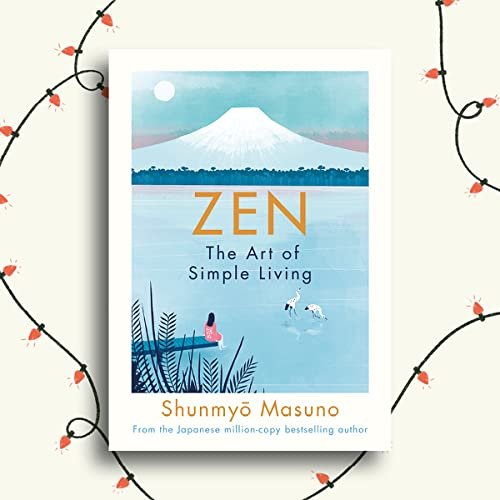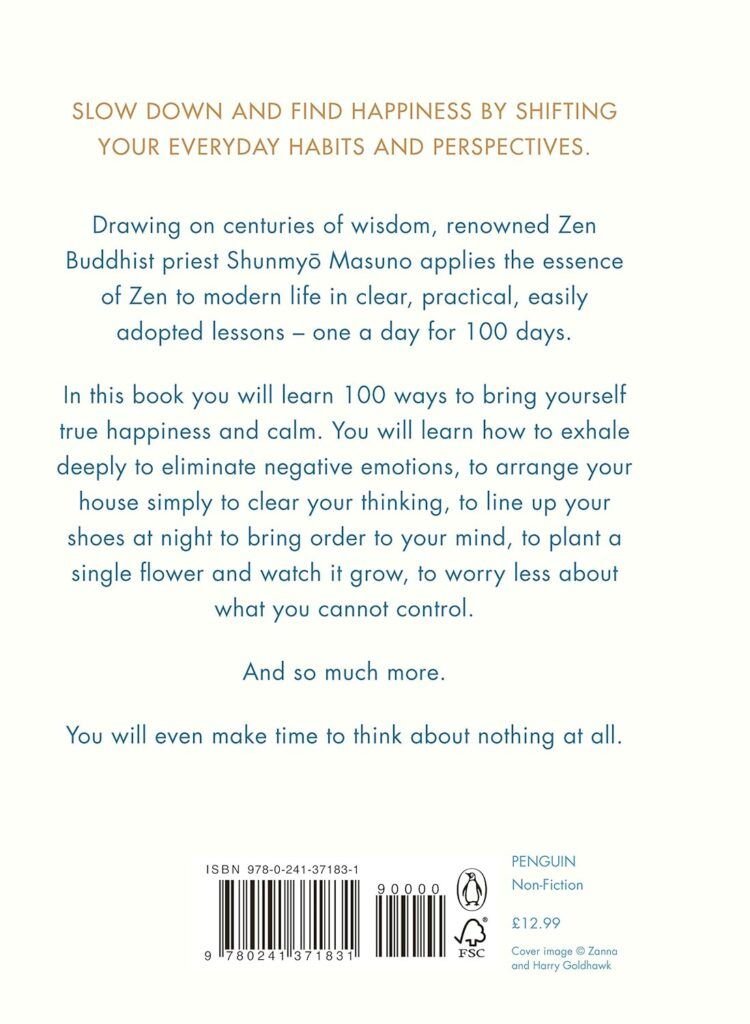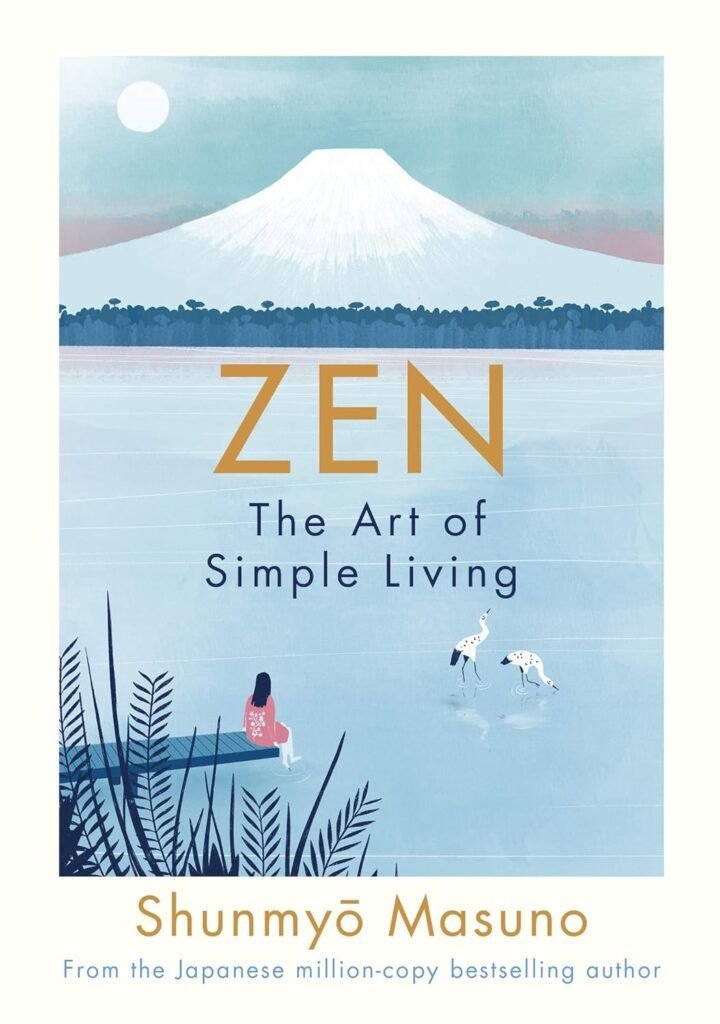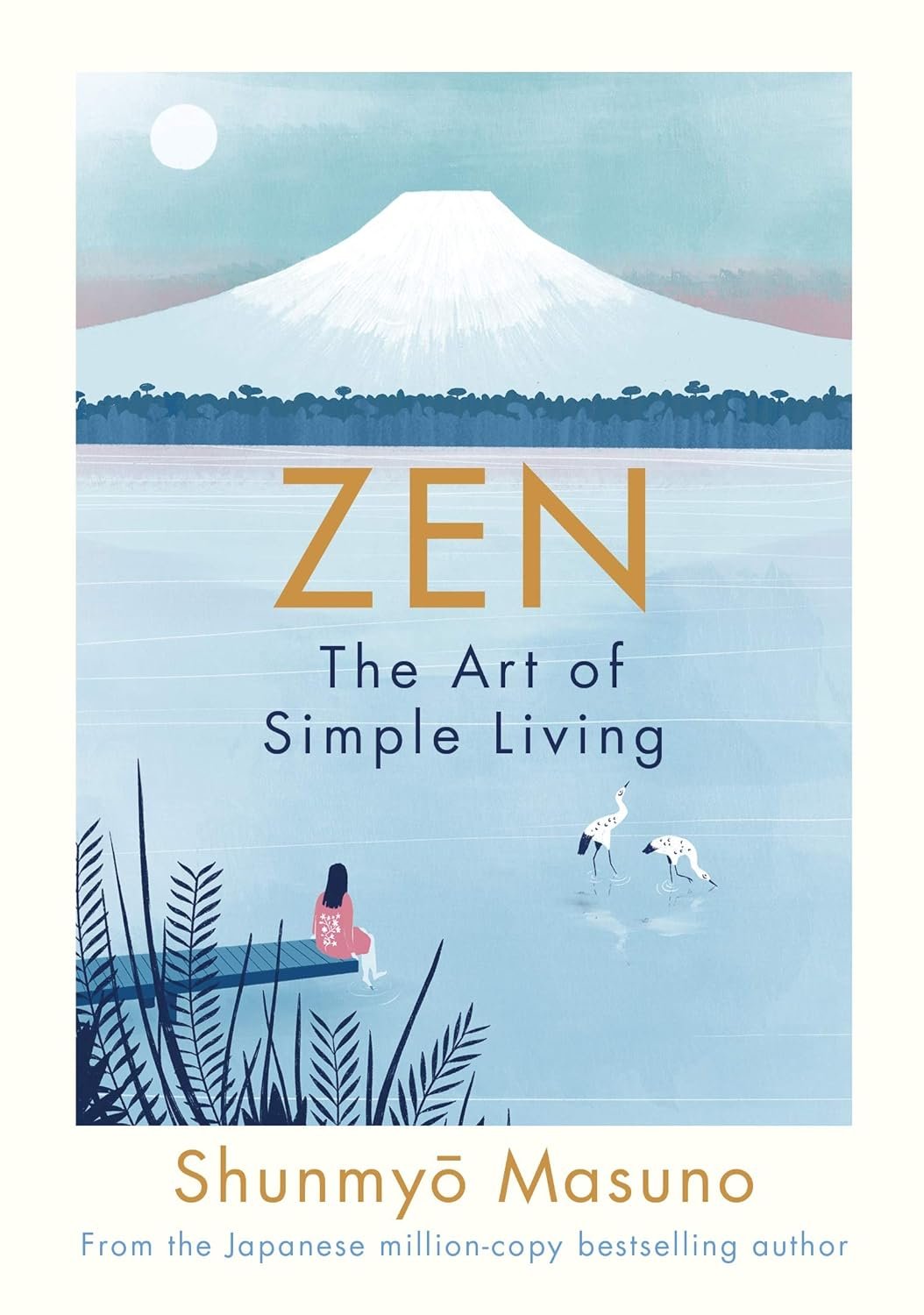1. Introduction

The Art of Simple Living by Shunmyo Masuno is a refreshing guide to finding peace and clarity in today’s chaotic world. Written by the head priest of a 450-year-old Zen Buddhist temple in Japan, this book belongs to the self-help genre, offering 100 practical lessons rooted in Zen philosophy. Through these teachings, Masuno provides readers with actionable steps to declutter their minds and embrace simplicity.
Shunmyo Masuno is not only a celebrated Buddhist monk but also an award-winning Zen garden designer and professor of environmental design. His expertise bridges ancient wisdom and modern practicality, making this book highly relatable. Have you ever wondered how small daily habits can transform your life? Share your thoughts in the comments after exploring this review.
2. Why Should You Read This?
In a world filled with distractions and stress, The Art of Simple Living stands out as a beacon of calm. Masuno’s insights are both timeless and timely, addressing universal struggles like anxiety, cluttered living, and lack of focus. The book’s bite-sized lessons make it accessible, even for those new to Zen practices or self-help literature.
Compared to other books in the genre, such as The Life-Changing Magic of Tidying Up by Marie Kondo, this book extends beyond decluttering physical spaces to fostering inner peace. In today’s fast-paced environment, its emphasis on mindfulness and intentional living is more relevant than ever. It’s a gentle nudge toward aligning our daily routines with our core values.
3. Key Teachings and Themes
The book is organized into four sections, each focusing on different aspects of self-improvement and mental clarity:
- Parts
- One: Energize Your Present Self with 30 actionable lessons.
- Two: Inspire Confidence and Courage with another 30 insights.
- Three: Alleviate Confusion and Worry through 20 focused teachings.
- Four: Make Any Day the Best Day with 20 final tips.
Key themes include mindfulness, minimalism, and the importance of cherishing the present moment. Masuno encourages readers to take simple steps like arranging their workspace, practicing deep breathing, or enjoying a quiet morning ritual. One impactful quote from the book reads: “When you arrange your desk, you clear your mind.” These teachings are simple yet profound, reminding readers that transformation begins with the smallest actions.
4. How This Book Can Help You
Reading this book can shift your mindset and help you adopt a more intentional approach to life. Its lessons encourage mental decluttering, leading to greater focus and reduced stress. For instance, Masuno’s advice on embracing Ichigo Ichie—making the most of the present moment—is a powerful reminder to savor life’s fleeting beauty.
The book’s practical exercises, like practicing gratitude or simplifying daily routines, can lead to tangible improvements in mental well-being. By implementing even a few of these lessons, readers can cultivate a sense of calm, purpose, and joy in their everyday lives.
5. Writing Style and Structure
Shunmyo Masuno’s writing is clear, concise, and deeply empathetic. Each lesson is delivered in short chapters, often accompanied by a Zen parable or relatable example. The bite-sized format ensures that even readers with busy schedules can easily absorb its teachings.
The book’s structure is thoughtfully designed, progressing from foundational concepts to more advanced practices. Its simplicity mirrors the Zen principles it promotes, making the reading experience as calming as the content itself. The colorful illustrations add a visual charm, enhancing the overall impact of the book.
6. Criticism of the Book
While The Art of Simple Living offers valuable insights, it may not appeal to everyone. Some readers might find the lessons repetitive, as they revolve around similar themes of mindfulness and simplicity. Additionally, those seeking an in-depth exploration of Zen philosophy may find the content too superficial.
The book’s format, though accessible, lacks a narrative flow, which might feel disjointed to readers who prefer a cohesive storyline. Despite these minor drawbacks, its practicality and charm make it a worthwhile read for most.
7. Why Summary Is Not Enough
Summaries can highlight key points, but they miss the essence of Masuno’s storytelling and the depth of his teachings. The real value lies in experiencing the author’s wisdom through his carefully chosen words and illustrations. Each chapter builds on the last, creating a holistic journey that cannot be replicated in a condensed format.
Moreover, the book’s calming tone and practical exercises make it an interactive experience rather than just a collection of ideas. Skimming through a summary would rob readers of this enriching engagement.
8. Thought-Provoking Debates
Masuno’s teachings spark important conversations about modern living. Can we truly simplify our lives in a world dominated by technology and constant connectivity? His advice on disconnecting from distractions, such as turning off notifications, raises questions about how much control we have over our time and attention.
The emphasis on mindfulness also invites reflection on how we prioritize our tasks and relationships. These debates challenge readers to rethink their daily habits and align them with their core values, fostering meaningful personal growth.
9. Who Should Buy or Read This?
This book is ideal for anyone looking to declutter their mind, reduce stress, and embrace a more fulfilling lifestyle. It’s a perfect gift for busy professionals, students, or anyone interested in Zen practices and mindfulness. Whether you’re a seasoned self-help reader or new to the genre, the book’s simplicity and charm will resonate with you.
10. Reasons Not to Buy/Read
While the book is widely appealing, it may not suit everyone. If you’ve already read extensively on mindfulness or Zen practices, you might find the content too familiar. Additionally, readers uninterested in spiritual or reflective themes may not connect with its message. Finally, if your current focus is on technical or goal-oriented self-help, this book’s philosophical approach might not align with your priorities.
11. Conclusion
The Art of Simple Living by Shunmyo Masuno is a gentle yet powerful guide to cultivating peace and clarity in everyday life. Through its 100 practical lessons, it offers readers actionable steps to simplify their routines and embrace mindfulness. While it has minor shortcomings, the book’s accessibility, charm, and timeless wisdom make it a valuable addition to any bookshelf.

12. Final Recommendation
If you’re seeking a book that combines Zen principles with practical advice, The Art of Simple Living is a must-read. Its lessons are universally applicable, making it suitable for anyone striving for a calmer, more intentional life. With its beautiful illustrations and thoughtful design, it’s not just a book but a source of inspiration you’ll return to time and again. Rating: 4.5/5 stars.
A Different Perspective from calmandcompose.com
For readers who arrived here from our partner site calmandcompose.com, our team truly appreciates your interest in exploring this detailed review.
On our partner site calmandcompose.com, we highlighted this book as a helpful tool for fostering peace of mind and a stress-free lifestyle, perfectly aligning with the site’s mission.
Here on awareandbeware.com, our team goes further, providing in-depth insights to ensure you can make an informed decision about whether it fits your specific needs. If you haven’t yet, we encourage you to visit the blog – Simple, Not Stupid: The Art of Intelligent Design on calmandcompose.com for another valuable perspective on how this product supports a calm and balanced life.


